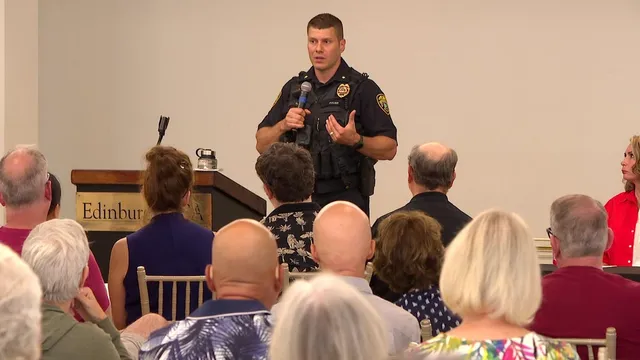
Gunman kills Minnesota lawmaker and spouse in targeted attack
2025-06-19 22:34- A gunman, Vance Luther Boelter, shot and killed two Democratic lawmakers in Minnesota, leading to a significant manhunt.
- The attacks are considered politically motivated, with authorities still investigating Boelter's motives and potential associations.
- This violence reflects a troubling trend of increasing political violence in the United States, prompting calls for societal change.
Express your sentiment!
Insights
In Minnesota, a series of violent attacks occurred on a day marked by significant political demonstrations. The suspect, Vance Luther Boelter, is accused of murdering Democratic State Representative Melissa Hortman and her husband Mark at their residence in Brooklyn Park on a Saturday. This tragic event also involved the shooting of Democratic State Senator John Hoffman and his wife, Yvette, who survived but sustained serious injuries. The assaults are believed to be politically motivated, occurring amid deepening political divisions in the United States. Amidst calls for calm, authorities initiated a manhunt for Boelter, who was last seen fleeing the scene after a brief exchange of gunfire with police. With the political climate increasingly polarized, Governor Tim Walz emphasized the need for peaceful discourse in a democracy. The FBI has offered a reward for information leading to Boelter’s capture as further investigations continue into his motives and connections to various political groups, including a potential link to abortion-related issues. The incident has sparked outrage and discussions about political violence, reflecting concerns about the safety of public officials and the escalating rhetoric permeating the nation's politics.
Contexts
Political violence in the United States has been a troubling concern, drawing attention from scholars, policymakers, and the public alike. The term encompasses a broad spectrum of actions that include assassination, terrorism, and violent protests that aim to achieve political objectives. Over the years, the landscape of political violence has evolved, influenced by various socio-political factors. Recent events have shown an uptick in such violence, especially linked to partisan divides, social movements, and extremist ideologies. Understanding the underlying causes of political violence is crucial for devising effective interventions that can help mitigate its impacts on society and maintain a peaceful civic environment. Statistical analysis reveals the patterns of political violence in the United States over time, indicating both its frequency and the groups involved. Historically, certain demographics, such as white supremacist groups, have been associated with a significant portion of politically motivated violence. In more recent years, the rise of leftist groups also marks a shift in the types of actors engaged in political violence, showcasing the complex and often contentious nature of American politics. Data collected from law enforcement and research organizations have provided a clearer picture of the frequency and scale of incidents across different regions, highlighting hotspots where political violence tends to escalate during election cycles or social unrest. The implications of political violence extend beyond immediate physical harm; they can significantly affect the political climate and citizen engagement. When violence is used as a tactic to suppress opposition or instill fear, it undermines democratic processes and can deter individuals from participating in political discourse. The media plays a crucial role in shaping public perceptions of these incidents, often amplifying the severity and frequency of violence in ways that may not always align with statistical realities. Understanding this relationship can help in creating more balanced narratives that encourage constructive dialogue rather than fear-based reactions. To address the issue of political violence effectively, it is critical for policymakers and community leaders to engage in proactive measures. Education and outreach programs can help promote a culture of peace and empower citizens to report violence. Strengthening community ties and promoting dialogue among divergent groups can reduce the incidence of violence stemming from political disagreements. Policymakers must also invest in data collection and research initiatives that can help identify warning signs of potential violence, enabling timely interventions. Ultimately, addressing political violence in the United States requires a multifaceted approach that accounts for the diverse factors influencing political behavior while fostering an environment conducive to peaceful political expression.